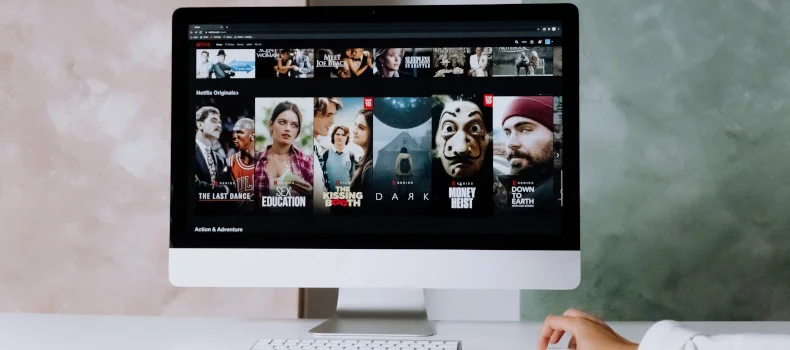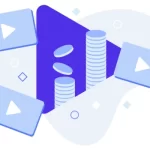OTT Platform definition
OTT stands for Over The Top. Referring to a streaming service that broadcasts video content over the internet. So, ‘Over The Top’ of another platform. This is different to cable format where TV watchers used to subscribe to cable providers and networks in order to access regular programming.
Now, cable providers only need to provide an internet connection and does no way to control what you end up watching or subscribing to.
Why is OTT important
OTT platforms are relatively new and we are still attempting to learn and evolve with any significant change. However, they are growing at a fast pace because many companies are joining the space. For viewers, this is great because the more competition amongst streaming platforms, the more diversity in the type of content and streaming format.
OTT livestreaming amplifies the influence of media delivery by offering broadcasters the ability to interact with live audiences. Video on demand represents a unique opportunity to reach those who are becoming less interested in traditional media outlets and are leaning towards the online world.
It can be watched on desktops, tablets, and on phones which makes it accessible on everyone’s favorite device. It delivers content hassle free, without the frustration or extra expenses associated with traditional TV.
OTT platforms are expected to reach more than $158 billion by the year 2024. If you have been considering starting a streaming platform, now is the time. It is an opportunistic idea with vast resources available.

How does OTT work?
As a broadcaster on WordPress, you will need a streaming plugin such as WpStream to get started. All you need is your website, the free plugin, streaming equipment such as a camera (or pre-recorded video files), and internet connection.
Once you start broadcasting live events or add videos/movies/TV shows to your website, a viewer will be able to browse through your websites digital content library and pick the video they want to watch. That is the moment that the OTT broadcasting process begins.
The difference between over-the-top video streaming and traditional web streaming is that video files could be quite large. Thus, transferring files and providing a great playback experience can prove difficult. To overcome this issue, video files must be compressed and broken down into smaller chunks known as packets.
Streaming files are sent to the viewer packet by packet. As packets are received by the viewer’s device, streaming protocols organize the data into a video file presented to the viewer. You will need to also make sure that you have the right settings and proper internet connection in order to deliver good content.
Many broadcasters worry that their own proprietary infrastructure and storage is used. However, content is delivered through the internet using Content Delivery networks (CDNs), telecom, and mobile device networks. These are all interconnected and reach the viewers when they finally pick which movie they want to watch.
Types of OTT Broadcasting
Earlier in the article, I mentioned both live streaming and Video-On-Demand. They both fall into the umbrella term but are significantly different.
Live Streaming
Live streaming is when you broadcast an event as it is happening in real time. It is an interactive form of content delivery which allows viewers to take part in an unique experience and know that hundreds, thousands, and even millions of people are watching the same video at the same time.
A few examples of this are Sports events like football championships, news broadcasts, concerts, and festivals. Quality is the most important part of live streaming. It is crucial to have the right equipment and be prepared to carry out several live streaming tests beforehand. Don’t find yourself in an awkward situation with technical issues when you should actually be live!
Lucky for you, there are streaming platforms out there that make your experience as a broadcaster as smooth as possible with all the features that one would need to deliver a successful live stream. Live streaming is popular for sporting events, church services, fitness instructors and gyms, schools and universities, and E-Commerce websites.
Video On Demand
Video on Demand (VOD) is video content that already exists and can be accessible by viewers at any time, any where. It exists due to the fact that you have uploaded the content to your website. You are also able to record your live streams and upload them to your website after the broadcast is over.
Live streaming is similar to traditional TV programming. That’s only in the sense that viewers cannot control what they are watching at that moment (unless they choose to not watch the live stream or switch off the TV). With Video on Demand, there are is a variety of video content available and ready to watch on your website.
To be clear, VOD is for pre-recorded content. There are no live streams or real-time events. Some of the benefits of VOD include flexibility and convenience. It can also be edited by the broadcaster before posting on their website to perfect the video and offer the best viewer experience.
The issue with live streams is that unexpected things could take place and there is less control over your content. Another benefit of VOD is that it doesn’t require external broadcasters or stream settings required for live broadcasting.

Monetization
The question that every broadcaster has in mind at this point is “can I monetize my OTT platform?” Yup!
There are different monetization options when it comes to such platforms and here are a few that WpStream offers. Note that they apply for both live streaming and Video On Demand.
Free
Offer your live streams and On Demand videos for free to your viewers. Included in this, you can even add your own ads through collaborations with other brands or companies. You can either do this manually (as seen with podcasts where they talk about their sponsors at multiple points in a podcast), or download a plugin that offers automatic ads.
Pay Per View
Pay-Per-View (PPV) is when a viewer will purchase a live stream or a VOD once and have access to the content for the duration of its life time (until you decide to delete it).
Subscription
Viewers will subscribe to your live streams, VODs, or to your website’s content using Global Subscription mode. By doing this, they have the option of pay on a weekly, monthly, or yearly basis. You find this with streaming platforms such as Netflix, Hulu, Disney+, and many others.
Hybrid
Finally, you can also set up a website that offers a variety of monetization options. You can mix and match, or even change the monetization option of a particular video product later.
OTT Trends in 2021
Before we get to the end of this article, let’s discuss some of the predictions for this year. The industry will continue booming, lead to creativity and further innovation.
- COVID changed everything we knew about streaming
- Many industries in Sales, Marketing, and Engineering are finding ways to include streaming
- Competition is leading towards more creativity and innovative features in streaming
- Smart TVs are including streaming apps and websites as defaults
Conclusion
Whether it’s live streaming in real-time or creating video on demand to include recorded performances, OTT broadcasting is the best vehicle for modern content delivery.
Are you looking for OTT broadcasting for your WordPress website and brand? WpStream will get you started in no time.
Start your free trial with WpStream today and experience the ability to broadcast live events, set up Pay-Per-View videos, and diversify the way you do your business.
Table of Content







